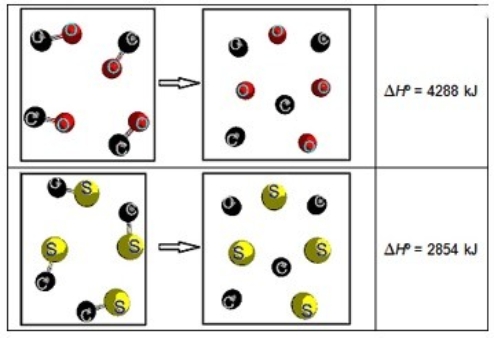Multiple Choice
Consider the following two representations of chemical reactions. Each sphere represents 1 mol of atoms.  What is ΔHºrxn for the following reaction? CS(g) + O(g) → CO(g) + S(g)
What is ΔHºrxn for the following reaction? CS(g) + O(g) → CO(g) + S(g)
A) -359 kJ/mol
B) 1434 kJ/mol
C) -7142 kJ/mol
D) -1434 kJ/mol
E) 7142 kJ/mol
Correct Answer:

Verified
Correct Answer:
Verified
Q13: Chemical reactions in a bomb calorimeter occur
Q71: Which of the following processes always results
Q80: Which is not a state function?<br>A) internal
Q81: What is ΔH°<sub>rxn</sub> for the decomposition of
Q83: Ethanol, C<sub>2</sub>H<sub>5</sub>OH, is promoted as a clean
Q84: For a particular process, 28 kJ of
Q86: If 325 g of water at 4.2°C
Q87: Which represents the formation reaction for XeF<sub>4</sub>(g)?
Q88: Octane (C<sub>8</sub>H<sub>18</sub>) undergoes combustion according to the
Q90: In which process is ΔH = ΔU?<br>A)